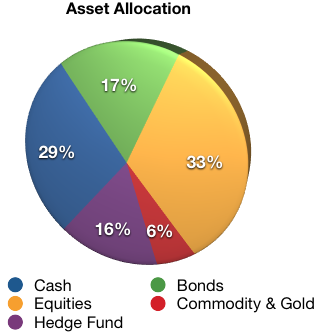David Fuller (Fullermoney): Substantiating bullish bias for equities “I have described conditions as being more bullish than bearish for a number of months. However such claims need to be substantiated by technical (market) evidence, which is best monitored every day.
“I will review the process, discussed at length in Fullermoney, in what can be a template for subscribers, not only for today’s environment but also the transition from every other bear to bull market in future:
“Climactic capitulation - Bear markets usually end in climactic fashion, which is the phase of greatest capitulation and despondency. This is what happened late last October and also in November.
“Base building - The most persistent capitulation stage marks the beginning of the end for the bear market, which by definition, must also be the beginning of the new bull market, although all one may see for some months will be ranging, including some new lows by indices for less fundamentally attractive markets, but also rising lows by indices for the next bull market’s leaders.
“Reversion to the mean - If the bear really is ending or over, you will see the evidence accumulate in several ways, which are different from the redistribution bear market rallies which occur on the way down. Mean reversion (we use the 200-day moving average to measure this because it is a widely followed medium to somewhat longer-term trend smoothing device) will become evident due to a combination of different developments.
“Uptrends are established - Indices will be breaking up out of their ranging bases, with the best performers establishing step sequence uptrends, one above the other. These will eventually break above the 200-day MAs, which will eventually turn upwards sometime later. The rising MA becomes a potential support level during minor mean reversions throughout the duration of the new uptrend.
“Summary - Perspective is gained by monitoring many indices, as there will inevitably be leaders and laggards. This is Fullermoney’s commonality approach. For instance, if stock market indices are mostly ranging but downward breaks are no longer being maintained, in contrast to some rallies which are being extended, one does not need to be a genius to deduce that demand (buying pressure) is beginning to exceed supply (selling pressure).
“The performance of upside leaders when looking for evidence of market bottoms and recovery potential is much more important than focussing on laggards, because we are looking for a transition from bear, which includes all stock market indices in its latter stages, to bull in which case markets will break away from the prior downtrend one by one over time.”
Source: David Fuller, Fullermoney, May 18, 2009.
 Cumulative Return since 2007 : -8%
Cumulative Return since 2007 : -8%![Reblog this post [with Zemanta]](http://img.zemanta.com/reblog_e.png?x-id=d28015dc-4f6f-424f-ad04-360568bdbea0)

![Reblog this post [with Zemanta]](http://img.zemanta.com/reblog_e.png?x-id=1f3930ef-a4c0-43ed-9baf-937983a589ac)